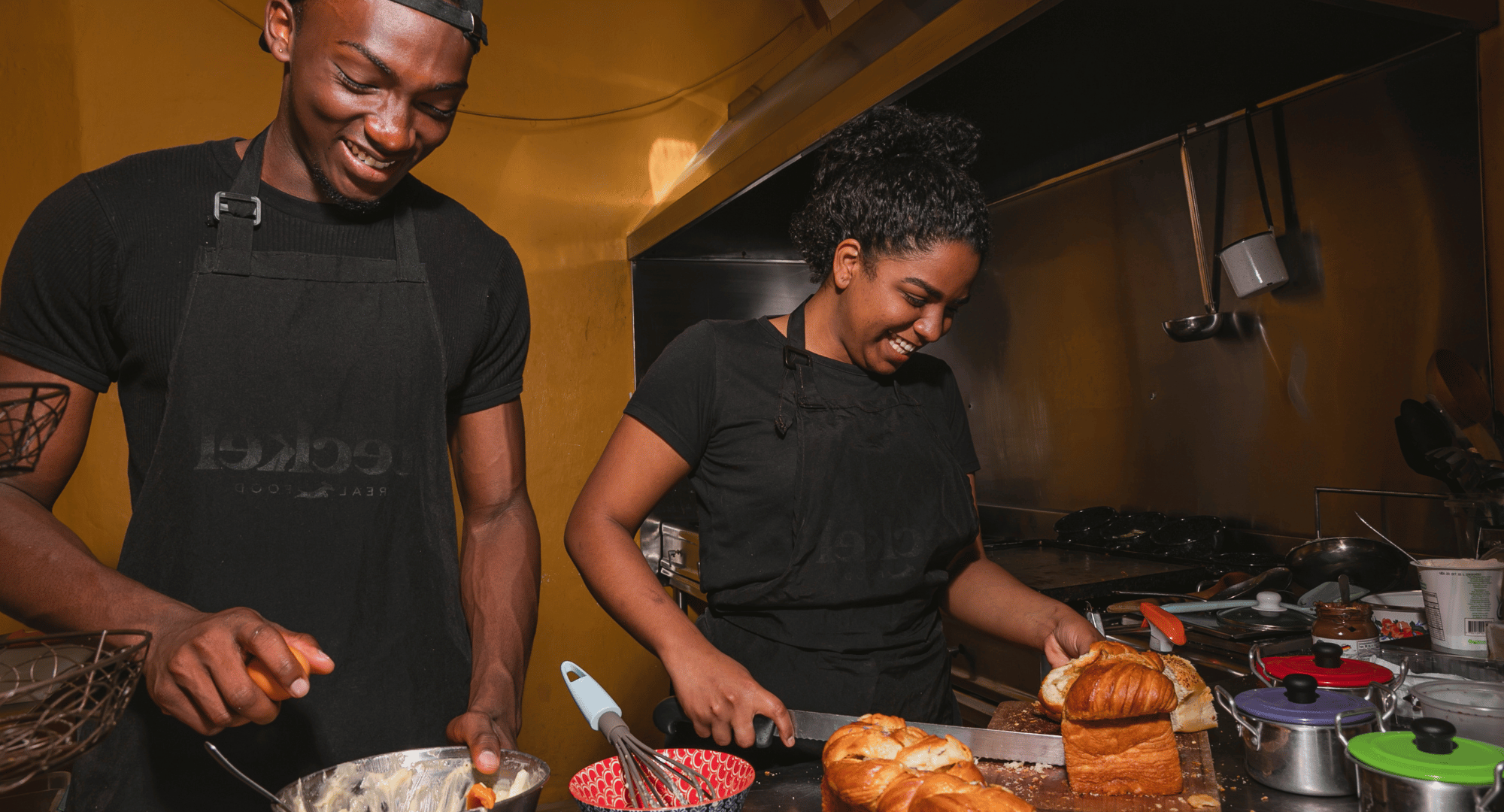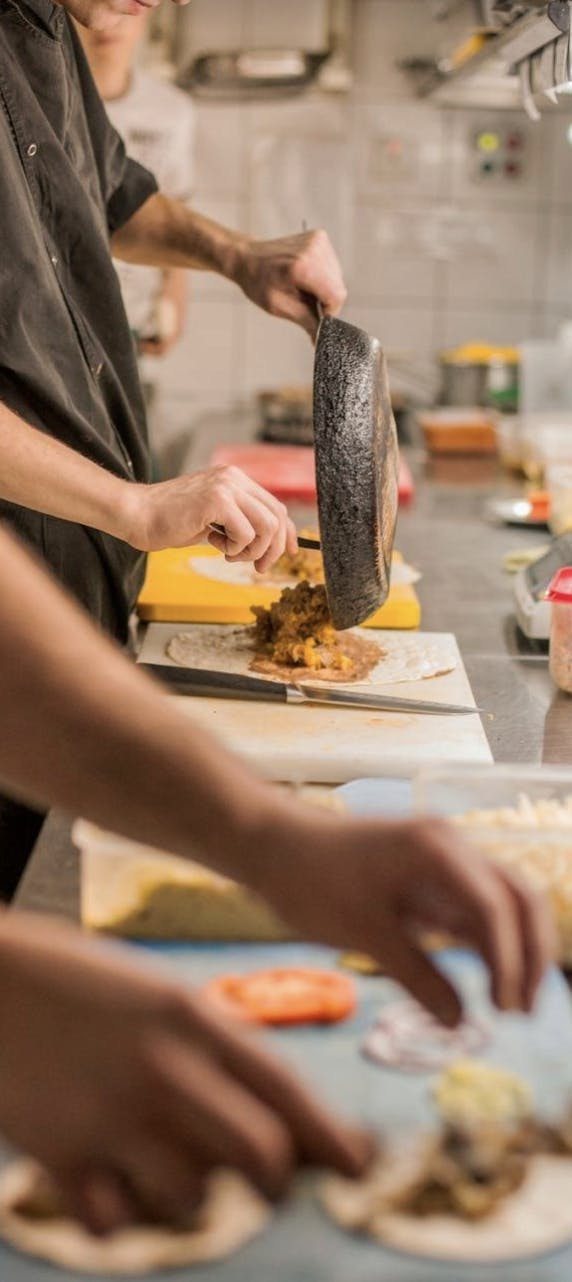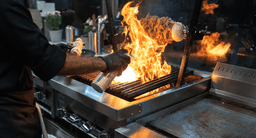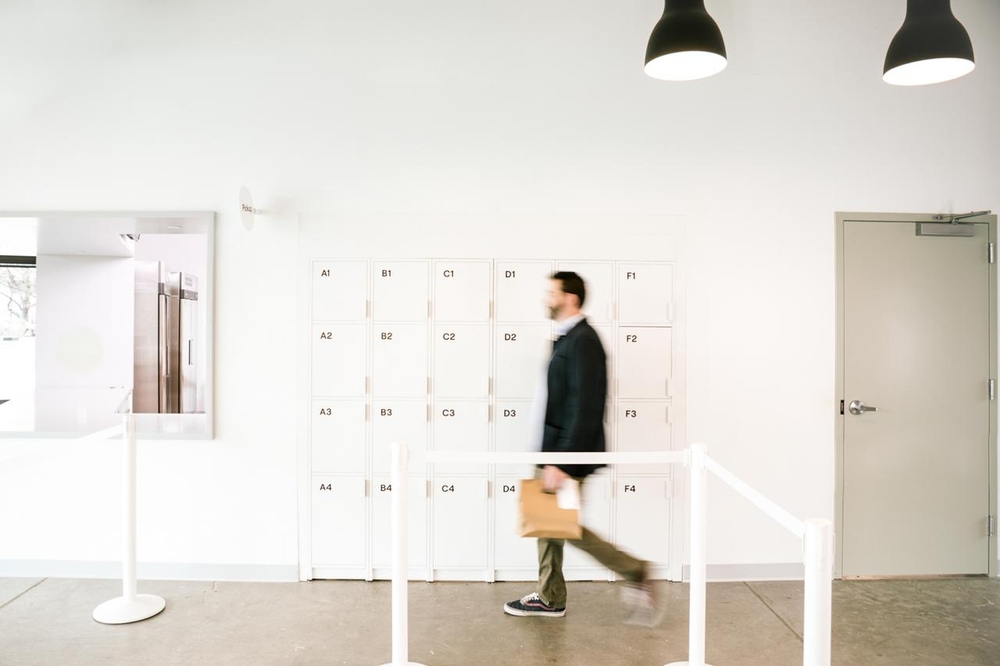4 Restaurant Ideas for Your Business
Table of Contents
CloudKitchens
How many tacos can be delivered from a 1000sqft restaurant?
The same amount as a 200sqft ghost kitchen.

4 Restaurant Ideas
Venturing into the restaurant business is much like perfecting an exquisite dish. If you wish to serve up something truly spectacular, each ingredient must harmonize—you need precision, timing, and flair. It’s a culinary juggling act, both on and off the plate.
As such, diving into the restaurant industry isn’t for the faint of heart. With a staggering 60% of new establishments folding within their first year, and 80% of businesses not seeing their fifth anniversary, the stakes are sky-high.
When learning how to open a restaurant that isn’t just a flash in the pan, you need more than just a passion for food—you need a concept that turns heads and food that delights the senses.
Here are 4 restaurant ideas to help inspire the next great kitchen.
1. Go for a culinary fusion
In a bustling metropolis, the culinary scene can sometimes feel oversaturated with conventional dining experiences. Just scroll through Yelp and you’ll likely find dozens of Italian, Sushi, Mexican, Indian, and Thai restaurants in the immediate vicinity competing with one another.
Amidst this sea of similar concepts, how can a budding restaurateur truly stand out?
Cue culinary fusion—the bold merging of two or more cuisines into a delicious symbiosis of something completely new and fresh. It’s about challenging conventional culinary norms, marrying flavors, and crafting an experience that takes your patrons’ taste buds on a gastronomic safari.
Finding your perfect fusion concept is about experimenting with ingredients, finding the right combinations, and above all, not being afraid to push boundaries.
2. Open food trucks
In a world where mobility creates a unique experience, food trucks have steadily gained traction as a lower-cost option for chefs who want to share their food with the city. When looking into how to start a food truck business, you’ll find that they’re adaptable, affordable, and can provide a direct route to the audience’s stomach—literally.
Benefits of food trucks include:
- Mobility: Food trucks aren’t confined to just one location. Instead of waiting for the customer to come to you, you can bring the food to the customer. Festivals, sporting events, business districts, beaches—all are prime locations to bring your menu to the masses.
- Fueled by social media: If you’re skilled at social media, you can channel that into your food truck marketing. Food trucks thrive on social media, where sharing your location, daily specials, and tantalizing food photos can build buzz and attract new customers.
- Lower cost: When compared to traditional brick-and-mortar restaurants, food trucks require a lower initial investment. No exorbitant rental fees or remodel costs—just the initial cost of the truck and the necessary culinary equipment.
3. Franchise
At its essence, franchising is a type of business structure where owners (franchisors) grant third parties (franchisees) the rights to operate under their established brand. In exchange, franchisees pay initial start-up fees and ongoing royalties, usually a percentage of gross sales.
Whether you have an established restaurant or are new to the food services industry, franchising could be a smart business decision:
- For established food brands: If you have found success, becoming a franchisor might be the next logical step toward brand expansion. It allows you to build the brand without taking on risks and responsibility involved with opening up a new location. By franchising, you encourage others to leverage your success in exchange for taking on some of that risk.
- For budding entrepreneurs: If you’re new to this industry, applying to open a franchise, such as McDonald’s or Chick-fil-A, may be the safest way to get your foot in the door. It provides access to an established brand’s IP as well as its continued guidance and logistical support.
4. Try a ghost kitchen
Are you a chef who’s obsessed with the art of creating unforgettable dishes but wishes to do so completely unencumbered by the shackles of traditional restaurant operations?
If so, ghost kitchens can be your stage.
Ghost kitchens, also known as virtual kitchens, distill the restaurant business to its purest form—delicious food. Free from the logistical constraints and overheads associated with a physical location, these purely digital culinary operations empower you to focus solely on the menu.
This restaurant model offers you the flexibility to adapt your menu, experiment with novel food concepts, or even run multiple ‘virtual’ restaurants from a single kitchen, all driven by real-time demand.
Put simply, ghost kitchens offer a unique blend of culinary creativity and data-driven adaptability. There’s no brick, no mortar, just good food on demand.
Purchase restaurant equipment
To cook the food, you’ll need the equipment to cook it with.
If you’re purchasing an already established restaurant, you can skip this step. But if you’re still in the initial stages of learning how to start a restaurant, you should start preparing your shopping list. What’s on it will depend on various factors, including your culinary style, projected demand, operating budget, and local regulations.
That said, common types of restaurant equipment include:
- Ovens
- Ranges
- Ventilation
- Fridges and freezers
- Specialty equipment
- Cooking equipment
- Safety equipment
- Mixers
- Storage containers
Obtain your licenses
Depending on the type of restaurant you plan to operate and where it will be located, you will inevitably need to obtain various licenses, including:
- EIN–An employee identification number (EIN): essentially functions as a business social security number for tax purposes. You can apply for free online by visiting the IRS website.
- Certificate of occupancy: If you plan on running a commercial kitchen, you’ll need to obtain a CoO via your local building department or department of housing. This document outlines the properties classification and verifies that the structure is up to code and fit for occupancy.
- Food service license: Practically every restaurant will be required by their state to obtain a food service license, which generally involves a facilities audit.
- Food handling permit: You will also be required to complete a food handling license by demonstrating that your facility meets regulations for food storage, sanitation, protection, and preparation.
- Liquor license: Plan on selling alcohol at your establishment? If so, you’ll need to obtain a restaurant license, beer and wine license, or tavern license.
Consider a ghost kitchen
Would you prefer to focus purely on your culinary creations while keeping the startup costs lean?
If so, then traditional brick-and-mortar locations might not be the ideal business structure, with their operational complexities—leases, permits, high operating costs—and the seemingly endless list of regulatory hoops to jump through.
So, what’s the alternative? Enter the ghost kitchen: a revolutionary concept that’s reshaping the food business landscape.
A ghost kitchen, also known as a virtual kitchen, is a professional food preparation and cooking facility set up for delivery-only meals. It’s the back-of-house kitchen operations and delivery infrastructure without the dining room.
Put simply, ghost kitchens make it fast and easy to get a food business up and running. It only takes weeks (not months or years) to get started, and you can do so for a fraction of the cost.
Open up a ghost kitchen with CloudKitchens
Countless other restaurant ideas could stir your entrepreneurial spirit. Whether you want to open an authentic BBQ joint, a cozy vegan cafe, a classic diner, or start an exclusive supper club, the possibilities are limitless.
Wherever your culinary pursuits take you, using the innovative ghost kitchen model could get your culinary journey started faster and at lower costs.
With a partner like CloudKitchens, you can turn your attention toward creating a fantastic menu without the burdensome overhead costs or front-of-house logistics commonly associated with a brick-and-mortar location or even a food truck.
We can partner with you to set up an operational and permitted kitchen in as little as 4 weeks.
Explore ghost kitchen locations across the US:
- Ghost kitchens in San Francisco
- Ghost kitchens in LA
- Ghost kitchens in NYC
- Ghost Kitchens in Toronto
- Ghost Kitchens in Atlanta
- Ghost Kitchens in Dallas
- Ghost Kitchens in Chicago
- Ghost Kitchens in Denver
- Ghost Kitchens in Miami
| DISCLAIMER: This information is provided for general informational purposes only and the content does not constitute an endorsement. CloudKitchens does not warrant the accuracy or completeness of any information, text, images/graphics, links, or other content contained within the blog content. We recommend that you consult with financial, legal, and business professionals for advice specific to your situation. |
Sources:
Binwise. What Percentage of Restaurants Fail? Restaurant Success Rate. https://home.binwise.com/blog/restaurant-failure-rate
More insights & stories
There’s more where that came from.
Get in the know and check out our additional insights



